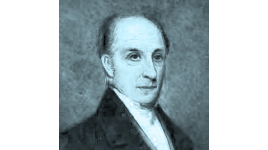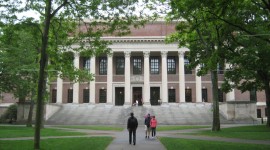Landscape Information
Established northwest of Boston in 1636, New College was renamed for benefactor John Harvard three years later. The oldest part and symbolic heart of the campus is Harvard Yard, a 25-acre pastoral green space that counterbalances the urban character of adjacent Harvard Square. The Yard comprises unassuming buildings of diverse character but similar in size and massing, organized around courtyards and quadrangles. These structures and the canopy of mature trees create a sense of enclosure, while paved, diagonal paths bisect open lawn and frame oblique and extended views.
Originally a cow pasture, the Yard began to take form in the early 19th century. During his presidency between 1810 and 1828, John Thorton Kirkland initiated improvements there, installing lawn, constructing paths, and planting elms and a pine grove. In 1813, architect Charles Bulfinch designed University Hall, sited so that it established the Yard’s scale and visual coherence, transforming the public space into an inwardly-focused, dignified arena for social interactions. Under President Charles W. Eliot, between 1869 and 1909, extensive building occurred which gave the Yard its logical organization. At the turn of the 20th century, connections and sightlines to Harvard Square and the Cambridge Common were blocked by buildings along the campus perimeter. The decorative wrought-iron Memorial Fence enclosed the campus, designed by McKim, Mead & White and constructed between 1890 and 1930. Three buildings in the Yard have been designated National Historic Landmarks, and the Yard itself was listed in the National Register of Historic Places in 1987.















